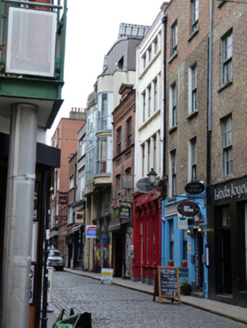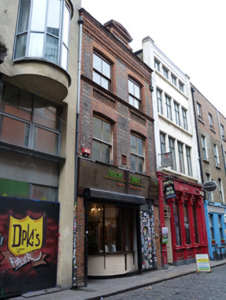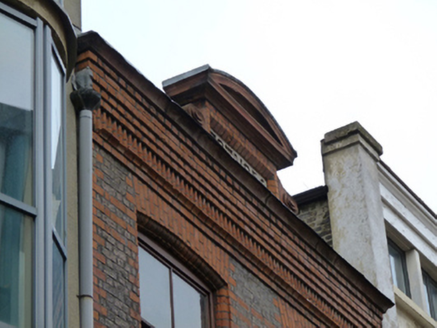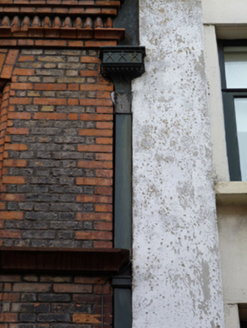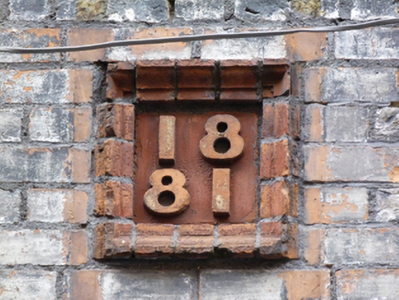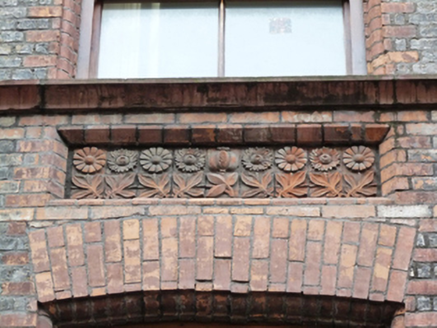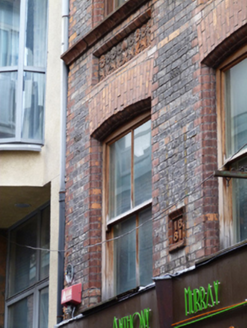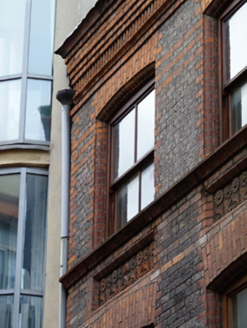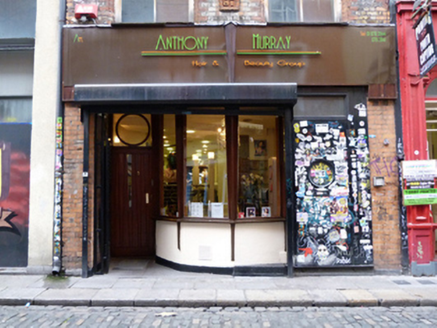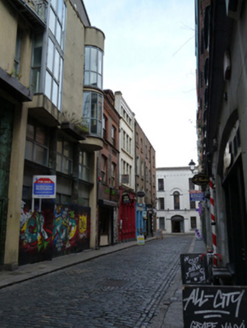Survey Data
Reg No
50020140
Rating
Regional
Categories of Special Interest
Architectural, Artistic, Social
Original Use
Office
In Use As
Shop/retail outlet
Date
1880 - 1885
Coordinates
315676, 234103
Date Recorded
20/02/2015
Date Updated
--/--/--
Description
Attached two-bay three-storey commercial building, built 1881, having recent shopfront to front (east) elevation. Now in use as salon and apartments. Hipped roof hidden behind moulded brick parapet with moulded terracotta cornice and segmental pediment over red brick pier having recessed date plaque, carved brick eaves course with fluted platband and cast-iron rainwater goods. Yellow brick walls, laid in Flemish bond, having red brick dressings with moulded terracotta panels and date plaque. Segmental-headed openings with bull-nosed red brick surrounds, moulded terracotta continuous sill course to second floor and two-over-two pane timber sliding sash windows throughout. Shopfront comprising curved rendered riser supporting plain display window and recessed square-headed opening with recent timber door, framed by red brick pilasters supporting recent fascia. Square-headed door opening having timber door and overlight. Located to west side of Crow Street between Dame Street and Cecelia Street.
Appraisal
An earlier building on this site was replaced with this one, the premises of the Irish Woodworker, the leading Arts and Crafts woodcarvers in Dublin at the time. A high level of ornamentation, including moulded and polychrome brick work, enlivens the façade, and attests to the quality of machine-made brick in the late nineteenth century. Decorative terracotta panels add artistic interest, and the parapet's segmental pediment creates a pleasing silhouette. Crow Street was named after William Crowe who held land the area in the early seventeenth century and built a house called the ‘Crowes Nest’. The street it was laid out in 1731 on land which is shown as undeveloped on Charles Brooking’s map of Dublin dating to 1728. The area was fully developed by the middle of the eighteenth century and became a mixed residential and commercial quarter.
